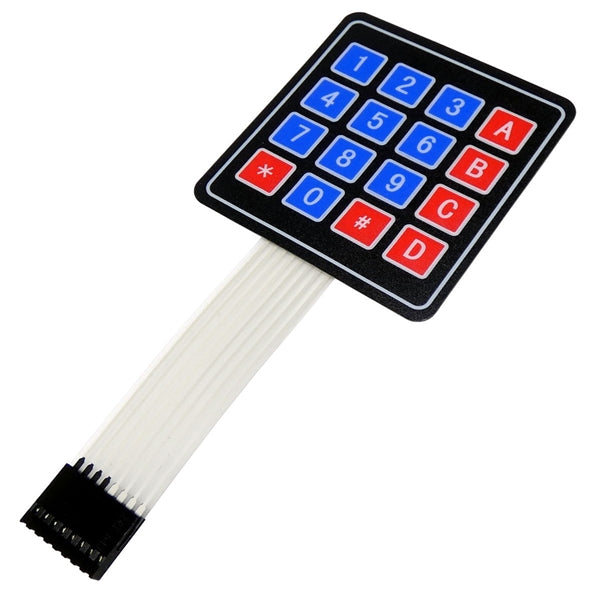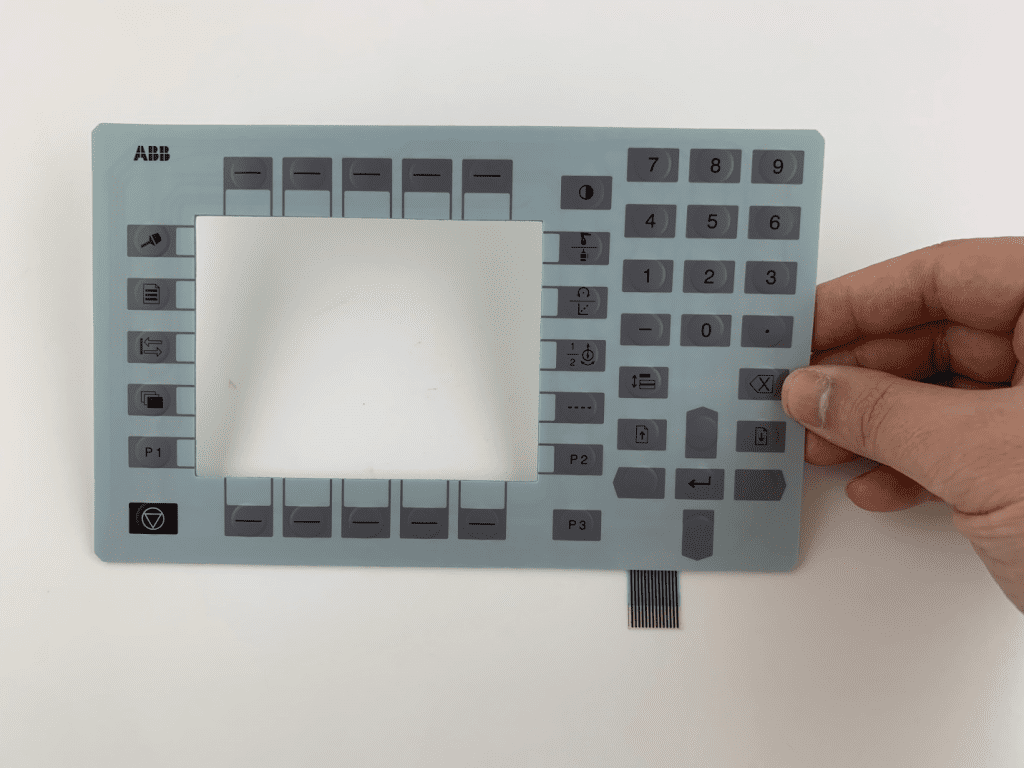Discover Exactly How Membrane Switches Feature and Their Function in Modern Electronics
Membrane Switches represent a sophisticated assimilation of innovation and style within the realm of modern-day electronics, acting as essential user interfaces in various devices. Included several layers, these switches make use of pressure-sensitive systems to assist in customer communication. Their applications extend various sectors, from consumer electronics to clinical tools, highlighting their adaptability and value. Comprehending the intricacies of Membrane switch capability and their broader effects in improving customer experience invites more exploration right into their design, benefits, and the cutting-edge advancements forming their future in technology.
What Are Membrane Switches?

Membrane switches are distinguished by their toughness and resistance to ecological variables, such as dirt, dampness, and severe temperature levels. They can be tailored with different graphics, colors, and responsive comments choices, improving individual experience while preserving aesthetic charm - membrane switches. The consolidation of printed circuits allows for seamless integration right into devices, boosting total performance.
The adaptability of Membrane switches appears in their capacity to sustain both basic and complicated control features. They can integrate functions such as LED indicators and touch-sensitive innovation, satisfying particular user needs. As innovation continues to advance, Membrane Switches continue to be necessary for allowing intuitive and reliable customer interfaces, thus playing a pivotal function in the development of modern-day electronic tools.
Parts of Membrane Switches
Membrane switches are made up of several vital elements that function together to develop a trustworthy and functional user interface. The primary components include the graphic overlay, sticky layer, spacer layer, and conductive traces.
The graphic overlay functions as the interface, normally printed on a versatile substratum such as polyester or polycarbonate. This layer not only gives aesthetic charm yet likewise consists of tactile comments, aesthetic cues, and protective attributes. Beneath the graphic overlay lies the glue layer, which safeguards the switch to the tool and makes certain longevity against ecological stresses.
The spacer layer is important for keeping the necessary space in between the visuals overlay and the circuit layer. This gap enables the activation of the button when stress is used. The conductive traces, generally made from silver or carbon, form the electrical pathways that finish the circuit when the button is involved.
In addition, a backing layer may be included for structural support and insulation. These elements work together flawlessly, making certain that Membrane switches are both resilient and user-friendly, making them indispensable in various modern electronic applications.
Just How Membrane Switches Work
Just how do Membrane Switches function effectively within digital gadgets? Membrane Switches operate the concepts of pressure-sensitive innovation, using a layered construction that consists of visuals overlays, adhesive layers, and conductive elements. When a customer uses pressure to the button, the leading layer warps, allowing the conductive elements under to make get in touch with and complete an electric circuit. This action sets off the wanted function within the gadget.
The design of Membrane switches is essential for their effective procedure (membrane switches). The layers are thoroughly engineered to give responsive feedback, resilience, and resistance to ecological elements such as dampness and dirt. The addition of domes-- small, elevated areas within the button-- improves responsive action, offering customers with an obvious click sensation upon activation
Additionally, Membrane switches can be customized in terms of dimension, shape, and graphics, making them appropriate for various applications. They are commonly utilized in control panels, clinical devices, and consumer electronic devices due to their streamlined design and dependability. On the whole, the efficient performance of Membrane buttons is critical in improving customer interaction and making sure smooth procedure in modern electronic gadgets.

Applications in Modern Devices
Utilizing their special layout and capability, Membrane switches have actually become important components in a large range of contemporary electronic gadgets. These flexible user interfaces are used in customer electronic devices, commercial devices, clinical gadgets, and vehicle controls, giving smooth customer communication.
In customer electronic devices, Membrane switches are typically found in home appliances like microwaves, washing devices, and other household tools, where they make it possible for instinctive control with a streamlined account. Their low-profile design helps with integration into portable tools, improving aesthetic appeal without compromising functionality.
In commercial applications, Membrane Switches act as control board for equipment, providing sturdiness and resistance to severe environments. Their capacity to hold up against wetness and contaminants makes them suitable for usage in manufacturing and handling markets.
Medical tools likewise benefit from Membrane switches, which are designed to be very easy to clean and maintain, making certain hygiene in clinical setups. They are typically used in analysis devices, patient surveillance systems, and mobile clinical tools, where dependability is critical.
Benefits of Membrane Buttons
One of the vital benefits of Membrane switches is their convenience, which enables them to be customized for a range of applications throughout several sectors. These switches can be made in various forms and sizes, fitting unique item requirements while supplying smooth combination right into devices. Their thin account enables a compact and smooth layout, typically boosting the aesthetic charm of digital products.
One more considerable benefit is their sturdiness - membrane switches. Membrane buttons are generally immune to dirt, moisture, and chemicals, making them optimal for rough environments. This resilience prolongs their life-span contrasted to typical mechanical switches, decreasing the requirement for constant substitutes
In addition, Membrane Switches offer cost-effectiveness. The manufacturing process includes printing modern technologies that minimize production costs, especially for big runs. This cost, integrated with reduced upkeep needs, makes them an attractive option for producers.

Conclusion
In verdict, Membrane Switches stand for a considerable development in user interface modern technology within contemporary electronics. As the need for user-friendly and resilient interfaces proceeds to grow, the duty of Membrane switches in shaping individual experience will definitely increase.
Membrane Switches represent a sophisticated assimilation of innovation and design within the world of modern electronic devices, serving as essential user interfaces in numerous tools.In the realm of modern-day electronics, Membrane Switches serve as critical elements that facilitate individual interaction with gadgets. As modern technology continues to advance, Membrane Switches remain necessary for enabling user-friendly and efficient user interfaces, consequently playing a pivotal function in the innovation of modern electronic tools.
How do Membrane continue reading this Switches feature effectively within electronic tools? Overall, the effective performance of Membrane buttons is pivotal in improving customer communication and ensuring seamless procedure best site in modern-day digital devices.